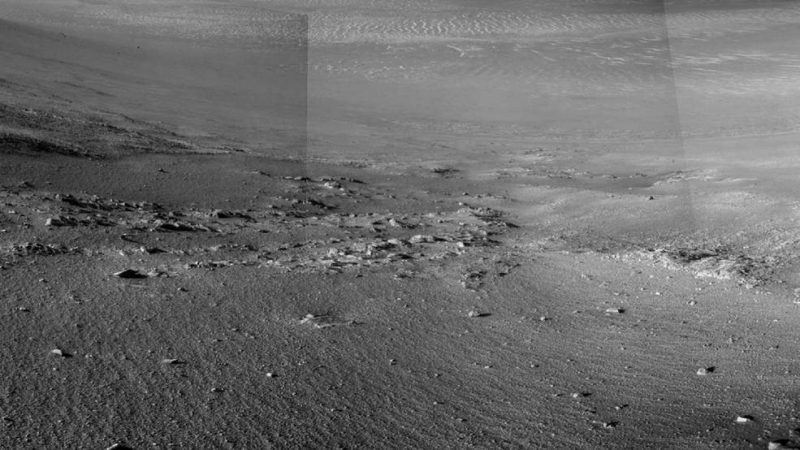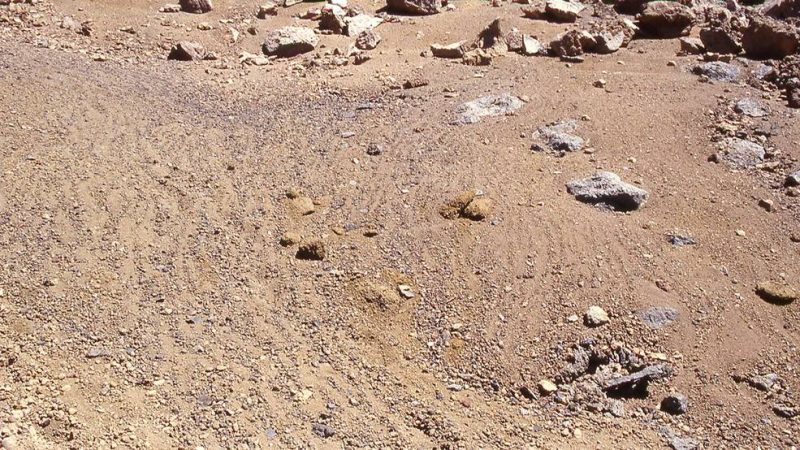
On February 16, 2018, NASA’s Mars Exploration Rover Opportunity reached its 5,000th Martian day, or sol, of what was planned as a 90-sol mission. The rover continues to provide scientists with surprises about the planet, most recently with observations of what might be a feature called rock stripes. Mission scientists say that the ground texture in recent rover images looks much like distinctive stone stripes on some mountain slopes on Earth that result from repeated cycles of freezing and thawing of wet soil.
The rover is investigating a channel called Perseverance Valley, which descends the inboard slope of the western rim of Endeavour Crater. Ray Arvidson of Washington University in St. Louis is Opportunity Deputy Principal Investigator. He said in a statement:
Perseverance Valley is a special place, like having a new mission again after all these years. We already knew it was unlike any place any Mars rover has seen before, even if we don’t yet know how it formed, and now we’re seeing surfaces that look like stone stripes. It’s mysterious. It’s exciting. I think the set of observations we’ll get will enable us to understand it.

Scientists are uncertain about the origin of Perseverance Valley and the possible rock stripes. Rover-team scientists are analyzing various clues that suggest actions of water, wind or ice. However, researchers said, the stripes might also be due to wind, downhill transport, other processes, or a combination. They are also uncertain about whether these features result from processes of relatively modern Mars or a much older Mars. Arvidson said:
One possible explanation of these stripes is that they are relics from a time of greater obliquity when snow packs on the rim seasonally melted enough to moisten the soil, and then freeze-thaw cycles organized the small rocks into stripes. Gravitational downhill movement may be diffusing them so they don’t look as crisp as when they were fresh.

Other lines of evidence have suggested to Mars experts that, on a scale of hundreds of thousands of years, Mars goes through cycles when the tilt of its axis increases so much that some of the water now frozen at the poles vaporizes into the atmosphere and then becomes snow or frost accumulating nearer the equator.
Bottom line: NASA’s Mars rover has discovered possible rock stripes while exploring the planet’s Perseverance Valley.











